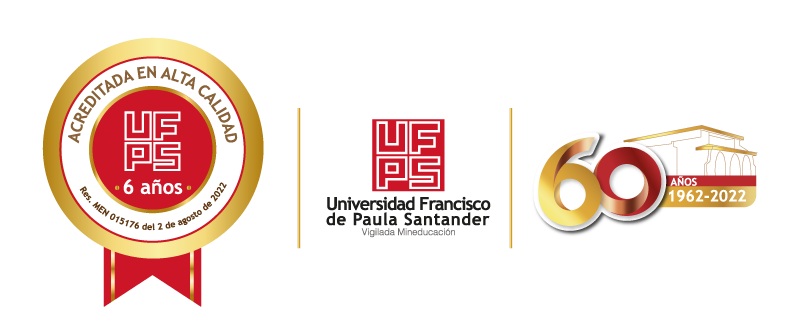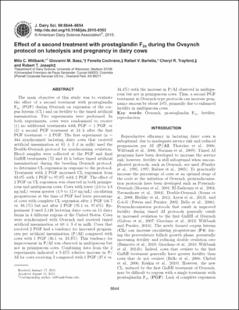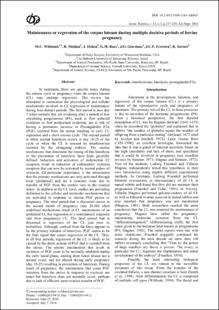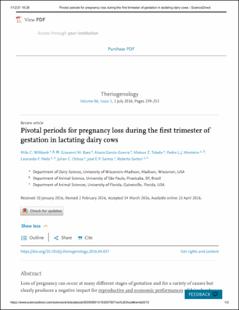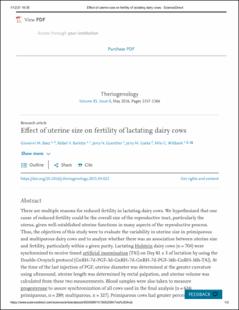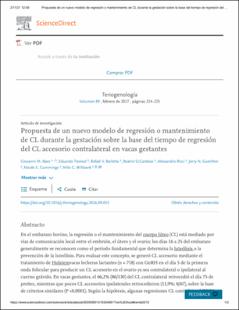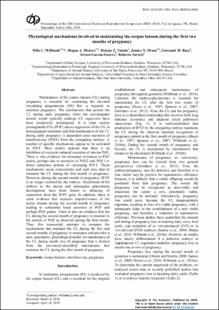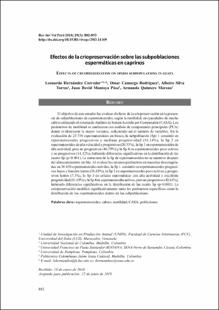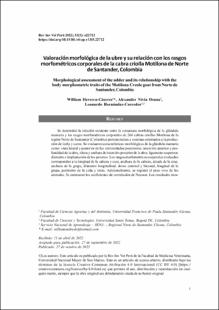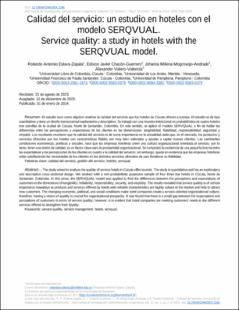Listar Reproducción Animal Tropical - TROPSYNC por fecha de publicación
Mostrando ítems 1-11 de 11
-
Effect of a second treatment with prostaglandin F2α during the Ovsynch protocol on luteolysis and pregnancy in dairy cows
(Journal of Dairy ScienceEstados Unidos, 2015-11-18)The main objective of this study was to evaluate the effect of a second treatment with prostaglandin F2α (PGF) during Ovsynch on regression of the corpus luteum (CL) and on fertility to the timed artificial insemination. ... -
Maintenance or regression of the corpus luteum during multiple decisive periods of bovine pregnancy
(Animal ReproductionBrasil, 2016)In ruminants, there are specific times during the estrous cycle or pregnancy when the corpus luteum (CL) may undergo regression. This review has attempted to summarize the physiological and cellular mechanisms involved in ... -
Pivotal periods for pregnancy loss during the first trimester of gestation in lactating dairy cows
(TheriogenologyEstados Unidos, 2016-04-22)Loss of pregnancy can occur at many different stages of gestation and for a variety of causes but clearly produces a negative impact for reproductive and economic performances of dairy herds. This review describes four ... -
Effect of uterine size on fertility of lactating dairy cows
(TheriogenologyEstados Unidos, 2016-05)There are multiple reasons for reduced fertility in lactating dairy cows. We hypothesized that one cause of reduced fertility could be the overall size of the reproductive tract, particularly the uterus, given well-established ... -
Proposal of a new model for CL regression or maintenance during pregnancy on the basis of timing of regression of contralateral, accessory CL in pregnant cows
(TheriogenologyEstados Unidos, 2017-02)In bovine pregnancy, regression or maintenance of the corpus luteum (CL) is mediated through local communication pathways between embryo, uterus, and ovary with Days 16 to 25 of pregnancy generally recognized as the pivotal ... -
Effect of feeding rumen-protected methionine on productive and reproductive performance of dairy cows
(PLoS ONEInglaterra, 2017-12-20)The objectives of this study were to evaluate the effects of daily top-dressing (individually feeding on the top of the total mixed ration) with rumen-protected methionine (RPM) from 30 ± 3 until 126 ± 3 Days in milk on ... -
Mechanisms for rescue of corpus luteum during pregnancy: gene expression in bovine corpus luteum following intrauterine pulses of prostaglandins E1 and F2α
(Biology of ReproductionEstados Unidos, 2017-12-27)In ruminants, uterine pulses of prostaglandin (PG) F2α characterize luteolysis, while increased PGE2/PGE1 distinguish early pregnancy. This study evaluated intrauterine (IU) infusions of PGF2α and PGE1 pulses on corpus ... -
Physiological mechanisms involved in maintaining the corpus luteum during the first two months of pregnancy
(Animal ReproductionBrasil, 2018-09)Maintenance of the corpus luteum (CL) during pregnancy is essential for continuing the elevated circulating progesterone (P4) that is required to maintain pregnancy. The mechanisms that protect the CL during early pregnancy ... -
Efectos de la criopreservación sobre las subpoblaciones espermáticas en caprinos
(Revista de Investigaciones Veterinarias del PerúPerú, 2018-09-06)El objetivo de este estudio fue evaluar el efecto de la criopreservación en la presencia de subpoblaciones de espermatozoides, según la motilidad, en eyaculados de macho cabrío utilizando el sistema de Análisis de Semen ... -
Valoración morfológica de la ubre y su relación con los rasgos morfométricos corporales de la cabra criolla Motilona de Norte de Santander, Colombia
(Revista de Investigaciones Veterinarias del Peru, 2022-10-27)Se determinó la relación existente entre la estructura morfológica de la glándula mamaria y los rasgos morfométricos corporales de 266 cabras criollas Motilona de la región Norte de Santander (Colombia) pertenecientes a ... -
Calidad del servicio: un estudio en hoteles con el modelo SERQVUAL
(Aibi, Revista de Investigacion Administracion e IngenieriasCúcuta, Colombia, 2024-01-01)El estudio tuvo como objetivo analizar la calidad del servicio que los hoteles de Cúcuta ofrecen a turistas. El estudio es de tipo cuantitativo, con un diseño transeccional exploratorio y descriptivo. Se trabajó con una ...
